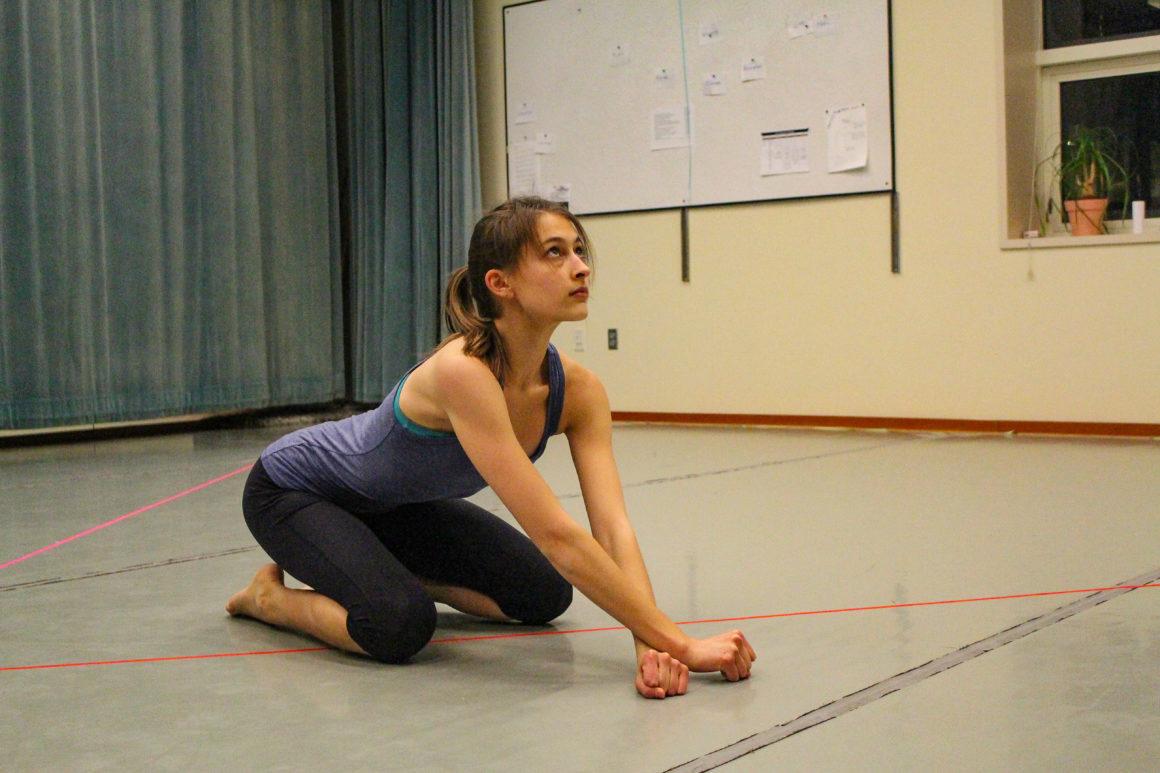Kaya Prasad ’19 has been exploring the world through movement since she was 2 years old. Since then, she has combined her passions of community building, theology and anthropology into her dancing career. The Grinnell fourth-year is currently working on her Mentored Advanced Project, a 30-minute dance performance entitled “Negotiating Boundaries: Identity and Exile.”
Prasad’s combination of community engagement and dance began in high school where she performed with an ensemble who did community service events like benefits for the children’s hospital or nursing homes. Her already impressive repertoire of ballet, jazz, tap and modern dance techniques was expanded upon when she came to Grinnell. She joined the salsa club, was part of the inaugural membership of the contra club and took up swing dancing.
“I always felt like dance was really important to me not just for the art form but also as a place to be with people and a way to build relationships with people, and to make friends. Some of my deepest and most lasting friendships have come through dance … I love being able to dance with people and get to know them through dance,” said Prasad.
When she was a first-year, Prasad performed in Taylor Watts’ MAP, “A Choreographic Exploration of Le Commerce Triangulaire [the Triangular Trade].”
“[The MAP] was an anthropology and choreography map with some French history involved in it too. I thought it was so cool that Taylor Watts was doing a project that combined dance and something really academic. Those had always been my two separate worlds,” said Prasad.
After taking a semester off of dancing to travel to Kunming, China for study abroad, Prasad enrolled in a linguistics short course at Grinnell that involved dancing as well as a choreography class.
The two classes had a profound effect on Prasad’s relationship with dance. She said that having the space and time to work with “people who think like Celeste [Miller, associate professor of theater and dance] about dance as something that can be used as a medium of creating knowledge and not just something that you do with your body to look cool or look pretty” awoke in her heart “this realization that I am a dancer and that’s a good thing.”
Prasad decided to rework her plan for her last year at Grinnell and incorporated dance into her independent major. She decided that for her senior thesis she would do a choreography MAP.
“The MAP is integrating all of the components of my independent major and so it draws on anthropology, religious studies, and dance. There are a lot of layers to it.”
Prasad spends about 16 hours a week in the dance studio: eight hours of Dance Ensemble and eight hours of rehearsals for her MAP. To create movement for her MAP, Prasad has selected some texts from the Hebrew bible and Christian scriptures that speak to the theme of exile and identity on national, religious, spiritual level.
Her MAP explores the “purpose exile serves in bringing us from the brokenness that we’re living and closer to the wholeness that we’re made for.” To explain these themes, Prasad conducted interviews with family members about immigration and living in a multicultural family. She interviewed her grandfather, who immigrated from India, about “living in a culture that makes him feel like he doesn’t really fit.” She also interviewed her dad and two aunts about growing up “halfway between” two cultures.
“I’m looking at how those stories have intersections with the universal story that emerges from the biblical narrative. I’m writing text that will be spoken as part of the performance along with the dancing.”
Prasad has completed sections of her performance, and the work she has already created is powerful and intriguing. Her dance movements emphasize the spoken dialogue, giving life and imagery to a text that is provoking on its own.
Prasad is also collaborating with musicians who are composing music based on the same biblical texts she is using to make movement, as well as other dancers. In the future Prasad plans to go on to the professional world of dance and apply what she has learned from her anthropology and theology classes to keep studying people, individuals and communities.
“Dance is not just an art form for experiencing yourself,” she said. “It’s also an art form for connecting with people through ideas and through movement.”


















































